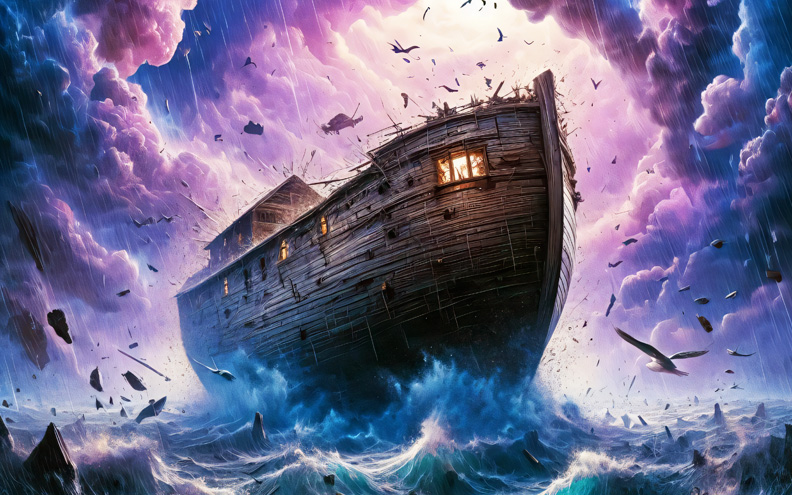Noah’s Flood: Divine Cleansing and a New Beginning

The story of the Great Flood described in the Book of Genesis is one of the most dramatic and significant events in the Bible. According to the sacred text, humanity had become so corrupt that God decided to cleanse the earth. “The Lord saw how great the wickedness of human beings was on the earth, and that every inclination of the thoughts of their hearts was only evil continually” (Genesis 6:5).
Amid this universal depravity, only Noah “found favor in the eyes of the Lord” (Genesis 6:8). God commanded Noah to build a massive ark, providing precise instructions: “Make yourself an ark of gopher wood; make rooms in the ark, and coat it with pitch inside and out” (Genesis 6:14). The ark’s dimensions were impressive: 300 cubits long, 50 cubits wide, and 30 cubits high.
Noah was to bring his family and a pair of each animal species: “And of every living thing of all flesh, you shall bring two of every sort into the ark, to keep them alive with you. They shall be male and female” (Genesis 6:19).
The flood began when Noah was 600 years old: “In the six hundredth year of Noah’s life, in the second month, on the seventeenth day of the month, on that day all the fountains of the great deep burst forth, and the windows of the heavens were opened” (Genesis 7:11). Rain poured for 40 days and nights, and the waters covered the earth for 150 days.
As the waters receded, Noah released a raven and a dove to check for dry land. Once the earth had dried, God commanded Noah and his family to exit the ark and repopulate the earth.
God established a covenant with Noah, promising never again to destroy the earth by flood: “I establish my covenant with you, that never again shall all flesh be cut off by the waters of a flood, and never again shall there be a flood to destroy the earth” (Genesis 9:11). The rainbow became the sign of this covenant: “I have set my bow in the cloud, and it shall be a sign of the covenant between me and the earth” (Genesis 9:13).
The flood narrative carries profound significance. It demonstrates God’s judgment against sin, but also His mercy and willingness to give humanity a fresh start. The ark is often interpreted as a symbol of salvation, while the rainbow serves as a reminder of God’s promise and faithfulness. This event continues to inspire and provoke reflection on the nature of divine justice, redemption, and the covenant between God and humanity.
